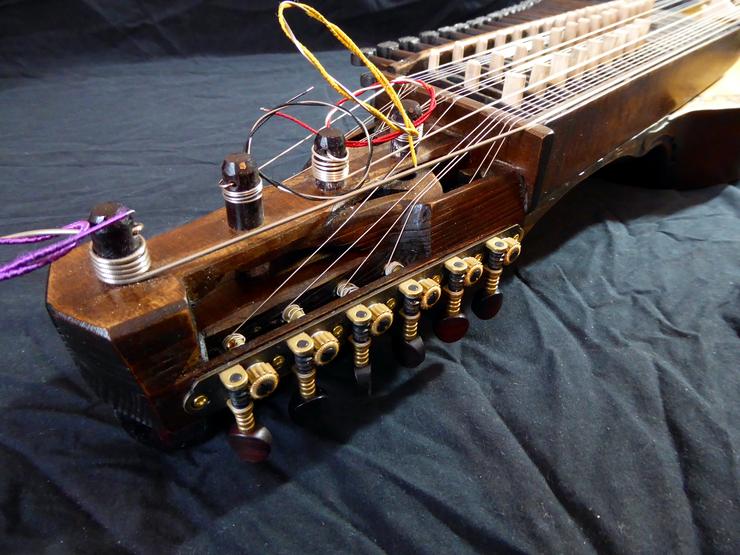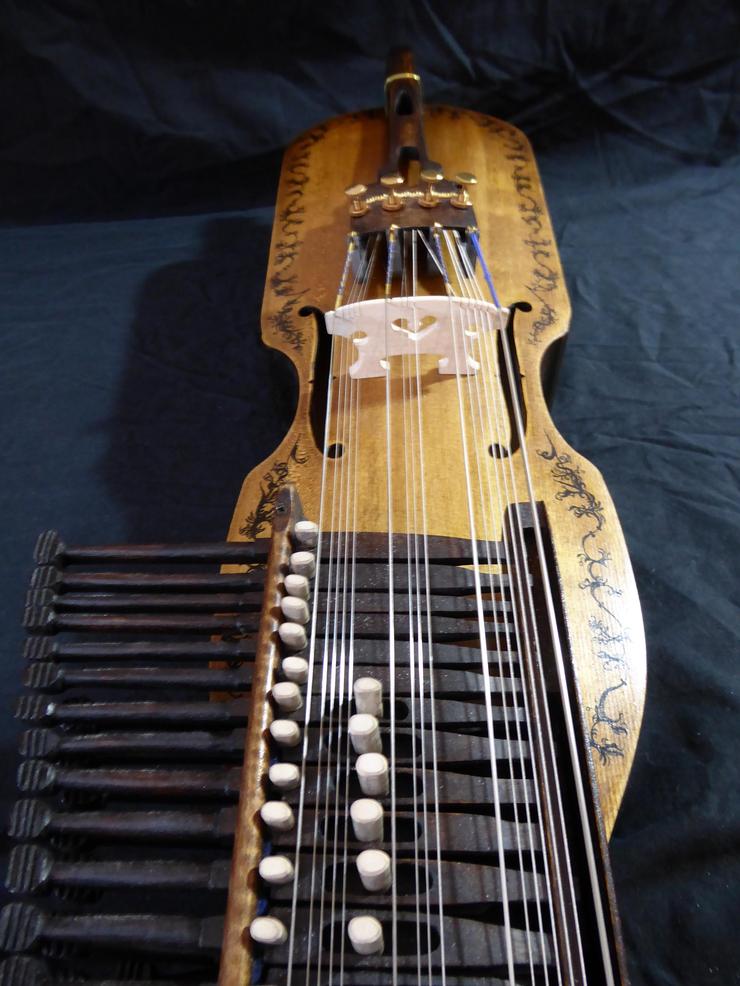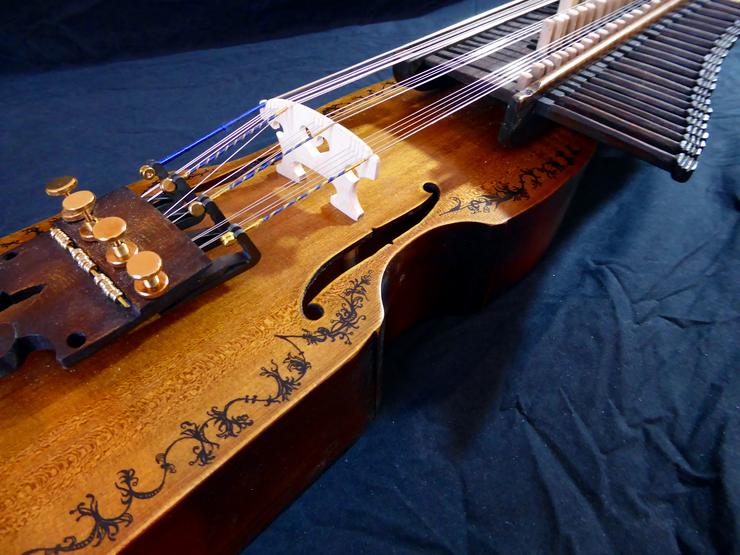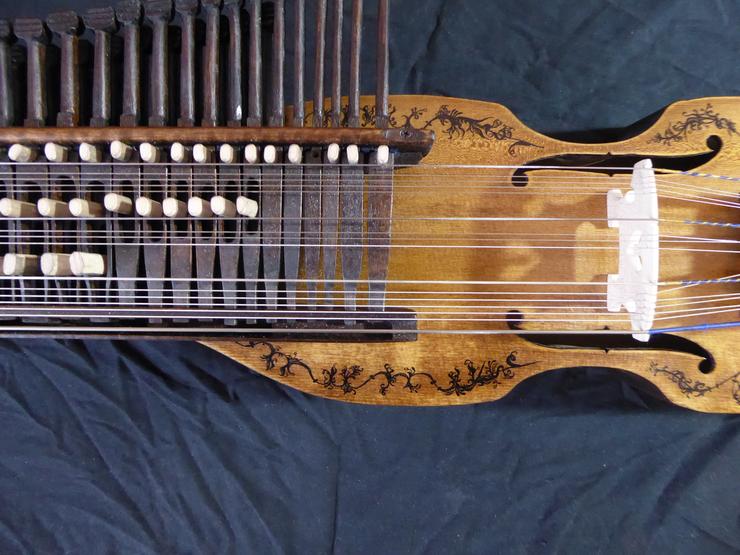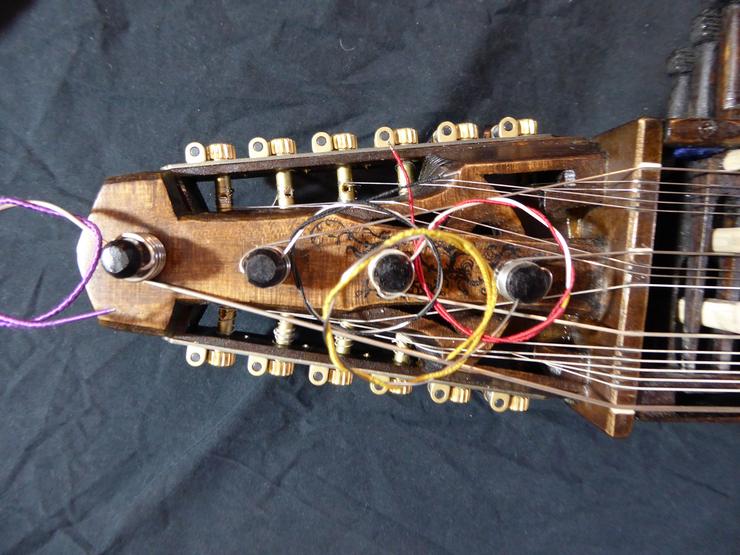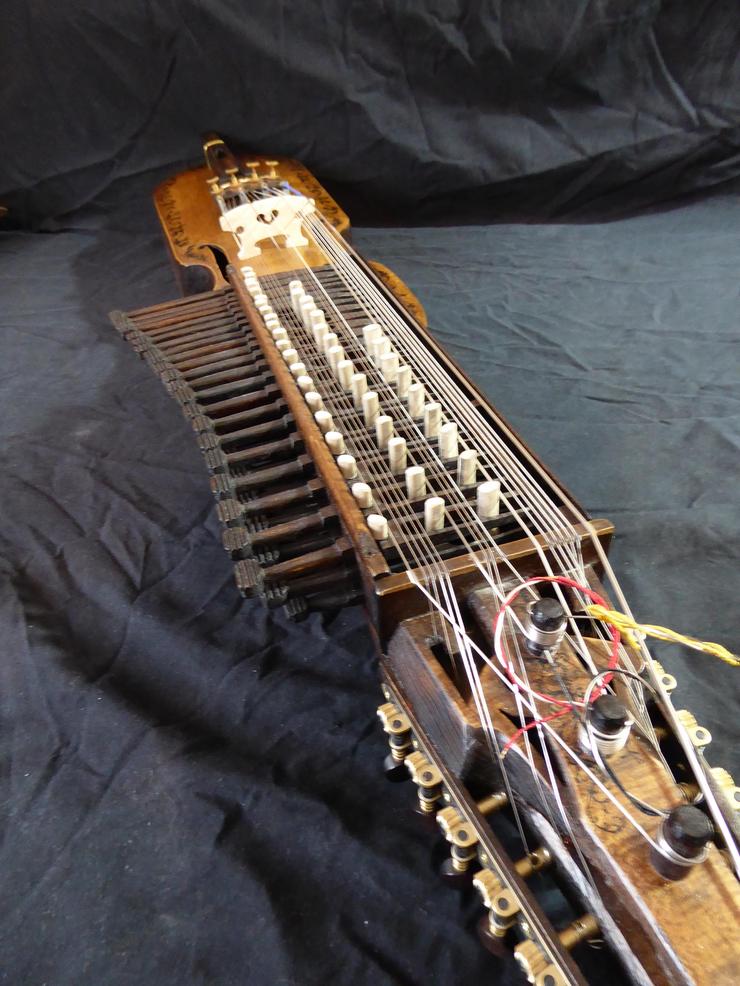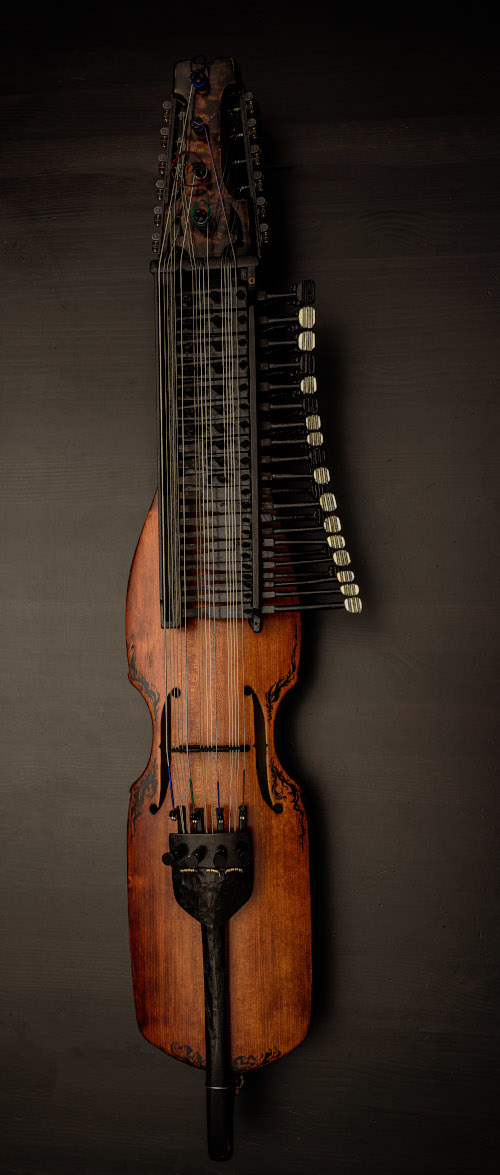
Modern, three-row nyckelharpa
The Uppland model is our interpretation of the traditional Swedish three-row nyckelharpa, with many details inspired by older Swedish instruments. The three-row nyckelharpa became popular during the 20th century. In the 1920s, August Bohlin added a third row of keys to the then two- or single row nyckelharpa. The playing became more fiddle-orientated as musicians started to use a modern bow and a more curved bridge. With a chromatic keybox, the musician had more opportunities to approach new music - in particular Sweden's rich fiddle-music traditions.
The tuning of the strings is the same as that of the silverbasharpa, but with additional sympathetic stings.
The modernisation was important to retain the popularity of folk-music and the nyckelharpa, as the movement was in decline in the early 20th century. The nyckelharpa-virtuoso Eric Sahlström (1912-1986) made an important contribution in the latter part of the 20th century to create new interest in the nyckelharpa-music. Reseracher Jan Ling gave the nyckelharpa academic recognition with his study in 1967. In the progressive political movement in the late 60s and the 70s, the nyckelharpa spread all over Sweden.
Some people suggest that a traditional instrument like the nyckelharpa should also be traditionally built and designed. More exotic woods may be both functional and aesthetic, but not necessarily fit right for someone looking for a traditional instrument. The wood used in this model "Uppland" is all sourced in Sweden and this is our way of offering a purely locally sourced instrument. The black and red-brown stains were popular at the turn of the Century and imitates exotic woods like ebony and mahongny.
The keys are made of birch (Betula pendula/pubescens) or beech (Fagus sylvatica) and the keybox and string-holder of Norway maple (Acer platanoides) or Birch (Betula pendula). In the traditional fashion the body of the instrument and neck is made of spruce (Picea abies), which is well-sounding, strong and lightweight. The spruce in our instruments comes from the region Bergslagen in Sweden.
Pictures: http://www.ecapphoto.com/

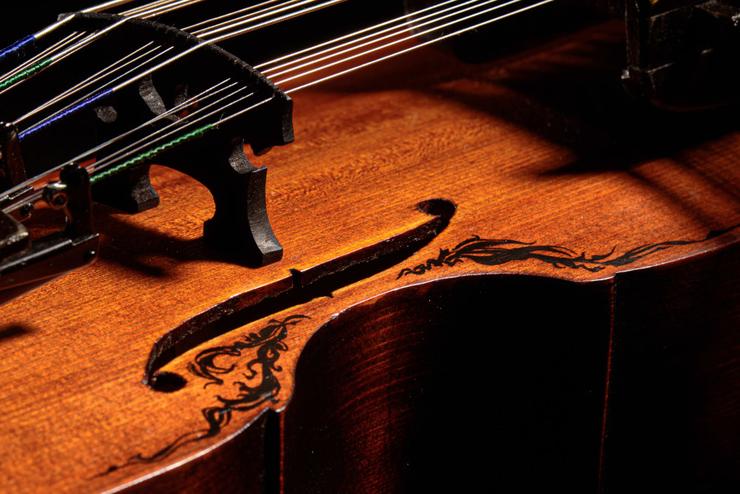


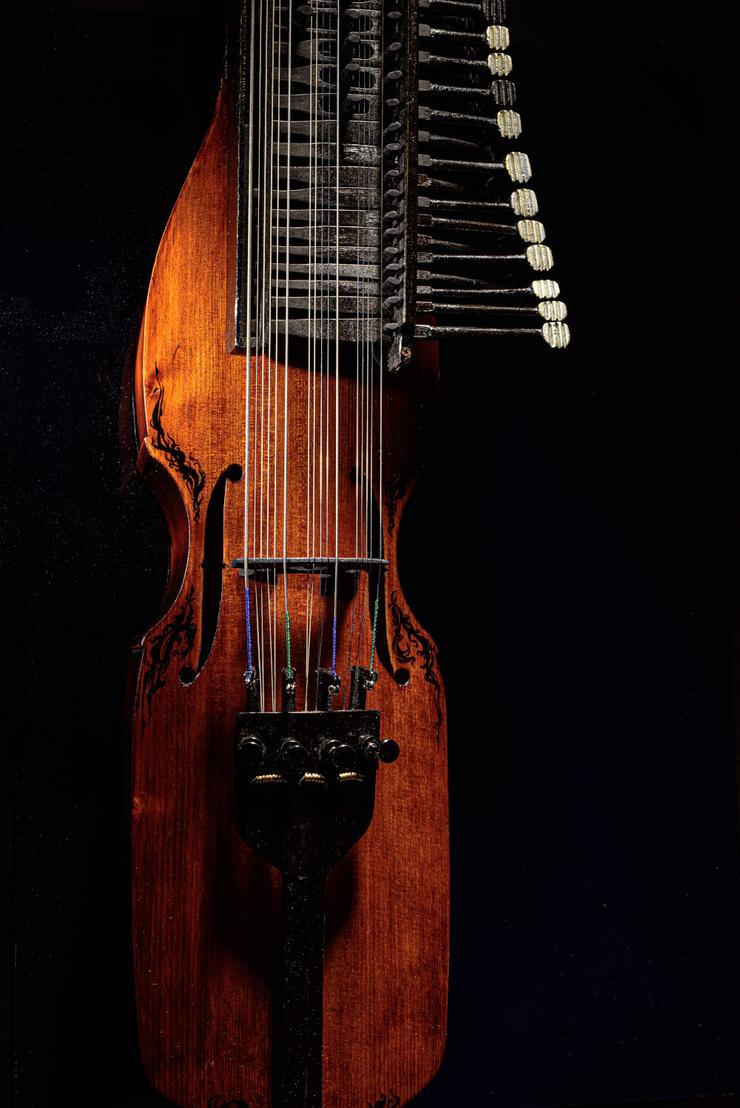
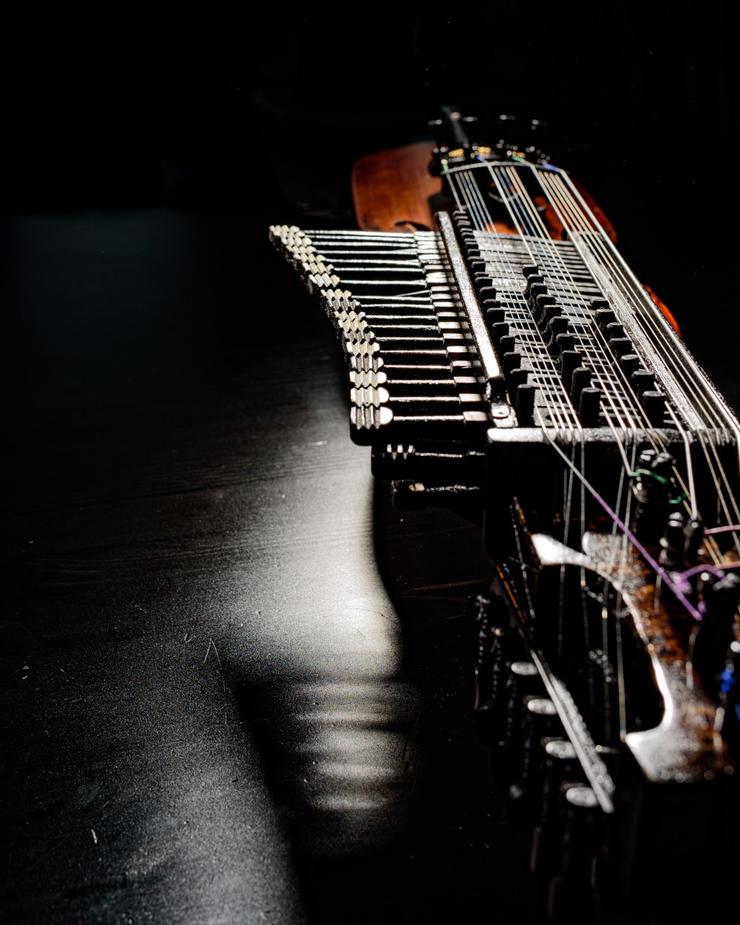
For the model ”Linné” we use historic elm (Ulmus glabra) from the Linnaean garden in Uppsala. The elms were planted in the 1820s on the grounds of the former academic garden. Some of the trees were taken down in the 20th century, when the garden was rejuvenated. This wood comes from one of these trees.
Elm is a relatively hard and strong wood which is much appreciated for its beautiful colour and texture. Elm has traditionally been used in Sweden for furniture as a substitute for exotic woods. Its physical properties makes it useful for wooden boats and water constructions, floors, carriges, looms and stable interior. In the nyckelharpa model Linné, we use it for some of the detailing, for its beauty and for a connection to this part of Swedish history.
The top is made of German spruce.
Pictures: http://www.ecapphoto.com/
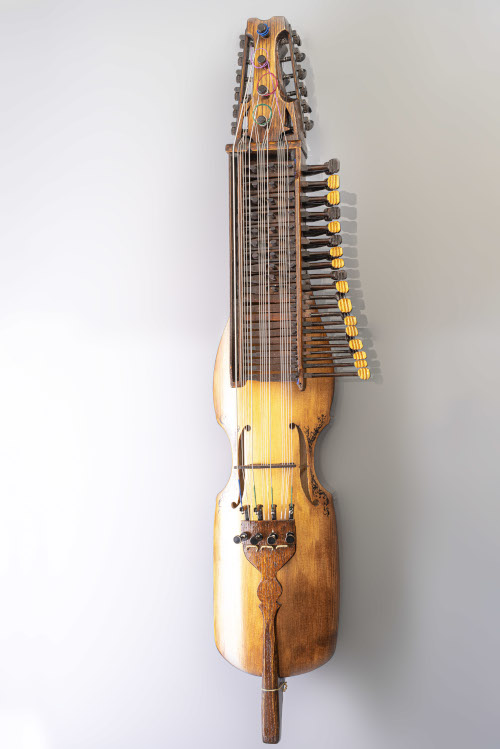
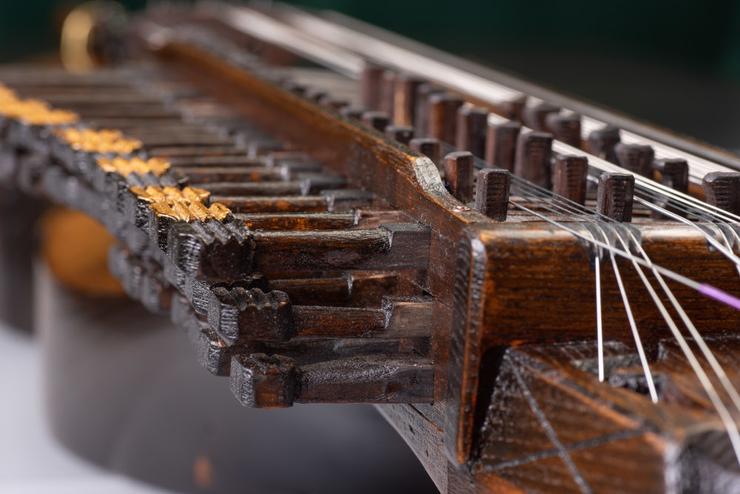
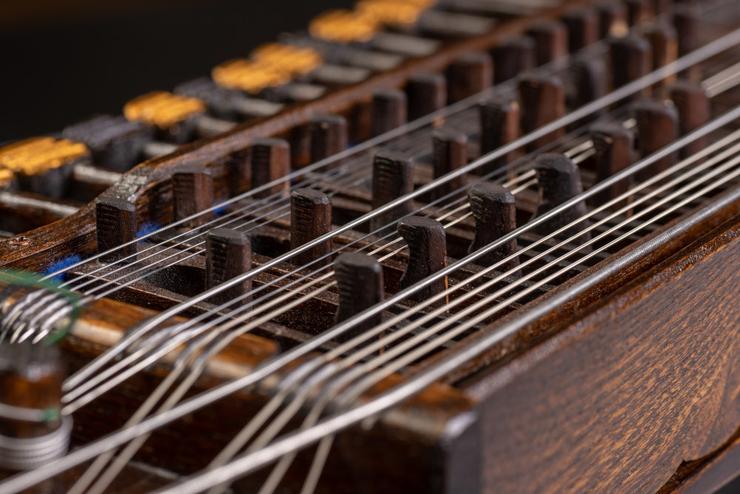
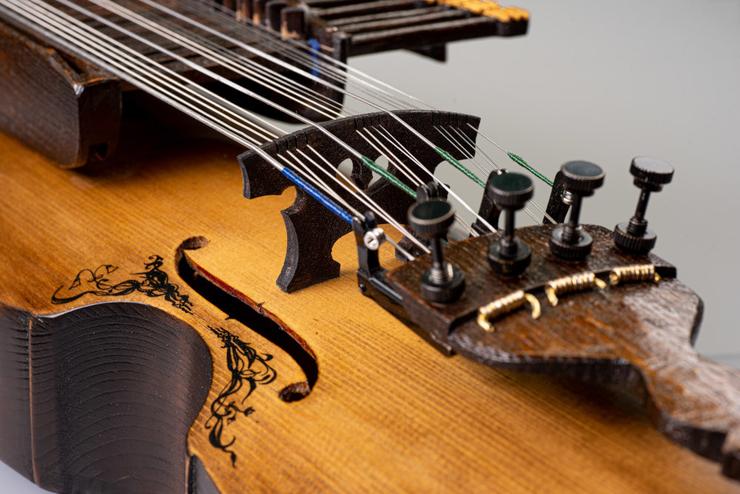
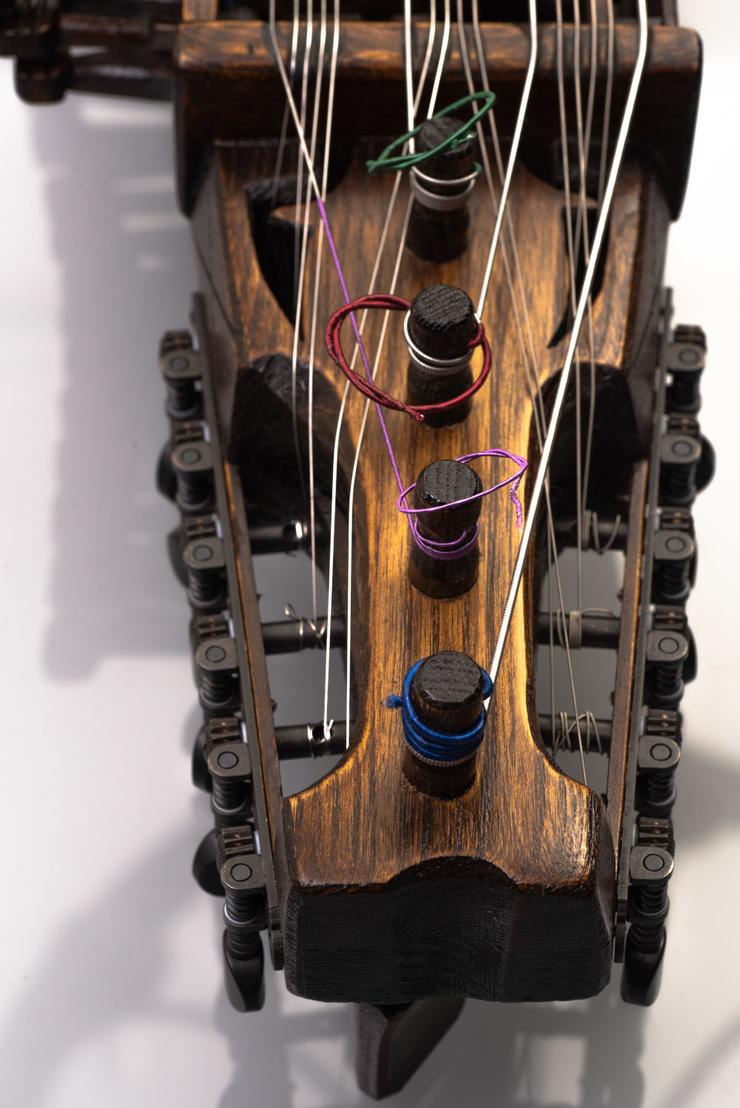
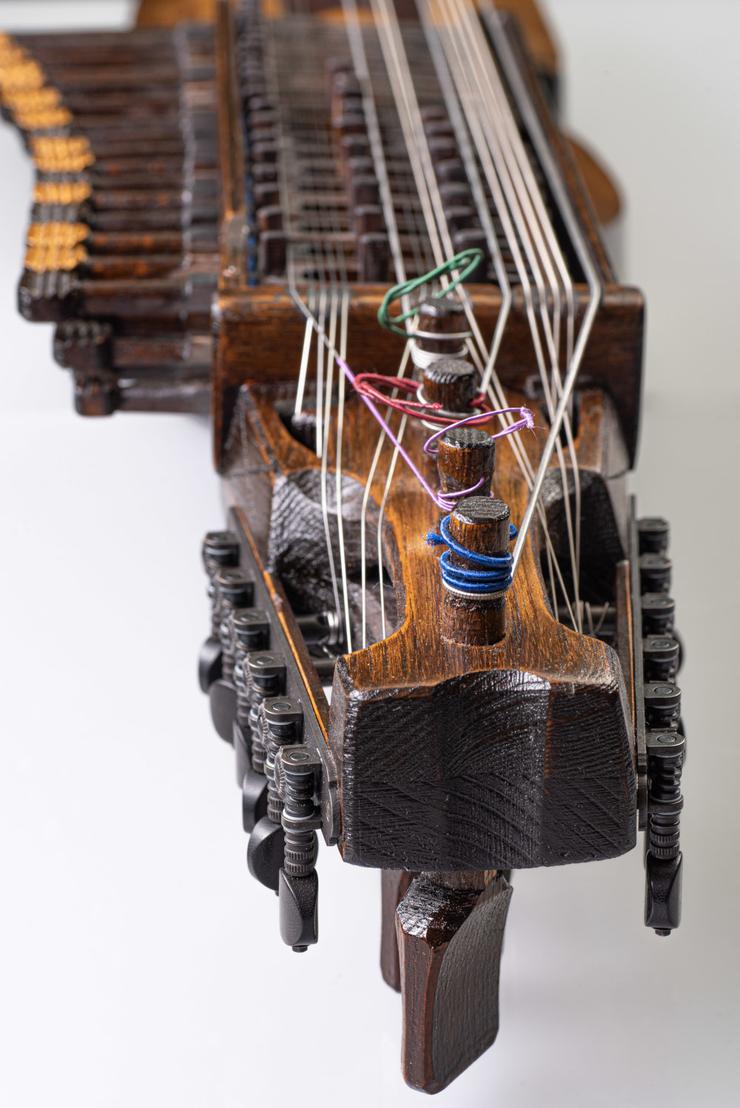
The three-row nyckelharpa took many different shapes as it spread over Sweden in the 1970s and onwards. Many nyckelharpa makers used their knowledge from other areas, like carpenting and furniture- or violin-making in the search for better sound, function and look. Experiments with four and five rows of keys were made, often with exotic woods.
What makes nyckelharpa-making a living tradition is this constant development, and it is a great privilege to be able to produce – and not only reproduce – as artists and instrument-makers. In the model "Europa", we use several types of wood sourced and used for instrument-making on the European continent. The body is made from Swedish spruce (Picea abies), except the top which is spruce from Germany. The keys are made of Swedish birch (Betula pendula/pubescens) and the rest of the keybox, string-holder, nut and bridge are made of flamed maple (Acer pseudoplantanus) or walnut (Juglans regia) from continental Europe.
